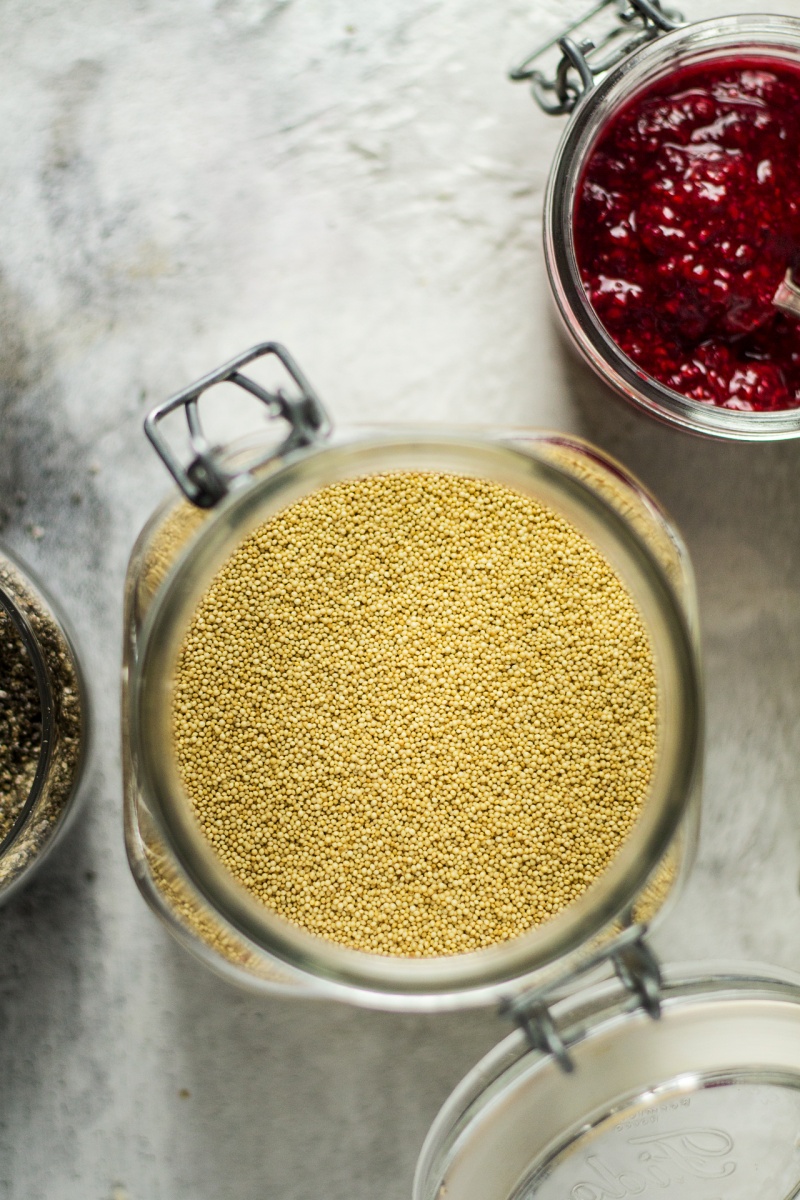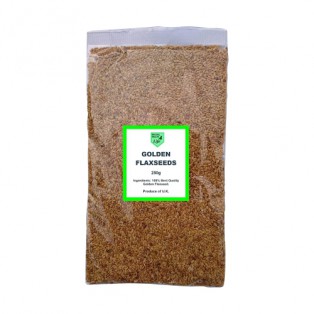
What’s your staple winter breakfast, guys? I tend to go for a steaming hot bowl of porridge, especially when I have a busy day ahead as it keeps me full until lunchtime. I have a soft spot for this simple Scottish (if made with rolled oats) fare, but I am pretty particular. It has to have texture, so I insist on making it with jumbo rolled oats and no other type will do.
My fondness for porridge may stem from my family’s childhood tradition where my mum would make a big vat of porridge for the entire family on Sunday morning. I used to love it with a cube of butter on top and a generous sprinkling of raisins, cinnamon and sugar 🙂 . I no longer have my porridge like that, but I’m still a fan of a well cooked porridge (I have had some bad specimens, especially when on the go).
As much as I love oats, sometimes I experiment a bit by using different grains (or pseudo-grains, in this case) to inject a bit of variety. In that vein, today’s recipe is for an amaranth porridge. In case you haven’t heard of it, amaranth is the current pseudo-grain ‘du jour’ although it’s a thousand years old apparently. It’s revered for high levels of fibre and a complete set of amino acids. It’s easy to prepare, easier than oats in fact as you don’t need to babysit it much.
Similarly to beans and nuts, amaranth contains phytic acid, which is somewhat of a problematic compound. It binds to the minerals in our food (like iron and zinc, for example) and prevents our bodies from absorbing them. To combat this, many experts recommend soaking foods containing phytic acid as it supposedly neutralises it. I am in two minds about this as phytic acid has also been found to be an important cancer and osteoporosis preventing compound so we don’t want to eliminate it from our diets completely. Dr Greger, whose expertise and objectivity I trust, explains it well in this video and according to him consuming onion and garlic alongside phytic acid-rich foods, substantially increases the bioavailablity of minerals again. As I would not recommend onion in your porridge, it’s perhaps best to soak your amaranth for this application though 😉 .
Aside from soaking, the porridge itself is super easy to make, it only takes about 15 minutes of bubbling on the stove and a couple of stirs. Once ready, it resembles cooked polenta with a subtle, earthy taste. Because I’m a rebel and I’ve missed berries having spent 4 years on a dry rock (AKA the Greek island of Paros), I’m having my porridge with a quick raspberry chia jam made from frozen berries. You are welcome to have it with cinnamon apples or pears or my maple orange roasted cranberries work really well too.




- 50 g / ¼ cup amaranth*
- 180 ml / ¾ cup plant milk (I used almond milk)
- ½ tsp ground cinnamon (optional)
- ¼ tsp ground ginger (optional)
- 1/8 tsp of ground nutmeg (optional)
- a pinch of ground cloves (optional)
- a pinch of ground cardamom (optional)
- a handful of seeds and nuts, pan-roasted
- maple syrup or agave syrup, to serve (optional)
RASPBERRY CHIA JAM
- 250 g / 0.5 lb frozen raspberries, thawed
- maple syrup or agave syrup, to taste (optional)
- 4 tsp ground (or whole) chia or flax seeds
- OPTIONAL STEP: Place your porridge bowl inside a warm (75° C / 165° F) oven to warm it up gently.
- Place rinsed (and ideally soaked for a few hours if you have time*) amaranth in a pot with your plant milk of choice (I used almond milk) or a mixture of plant milk and water. Add winter spices if you wish.
- Allow the mixture to come to the boil, then cook it, uncovered, on a very low heat, stirring from time to time. It takes about 15 minutes for the porridge to be ready (it resembles polenta or grits once it’s cooked).
- While the porridge is cooking, you may want to roast your nuts and seeds on a dry pan and make quick raspberry jam (see below).
- Serve in a pre-warmed bowl topped with raspberry jam, roasted nuts and seeds and maple syrup.
RASPBERRY CHIA JAM
- Mash up thawed raspberries with a fork.
- Sweeten to taste if you wish.
- Mix chia seeds in and allow ‘the jam’ to stand for about 10 minutes so that it has a chance to thicken. Store in an air-tight jar / container in the fridge.














I am not sure as I have not tried doing that but you are welcome to try. Ania
Probably around 1 week, I would say. Ania